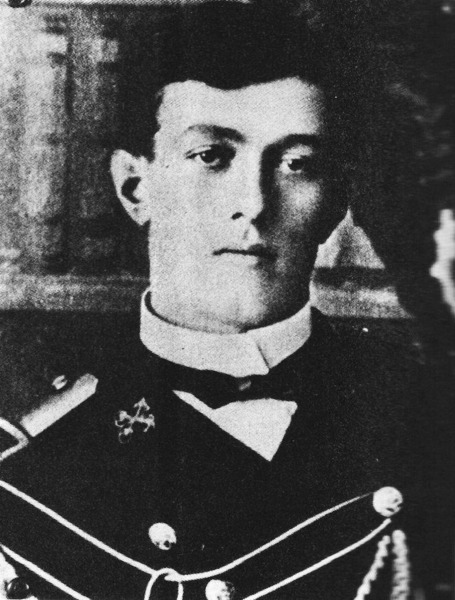
1. Hilario Malpica, Capitán de Navío. Courtesy of Wikimedia Commons.
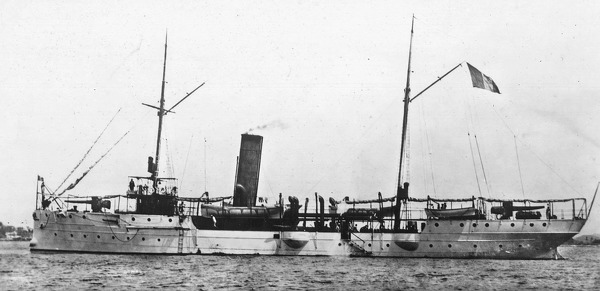
2. The Mexican gunboat Tampico. Courtesy of the author.
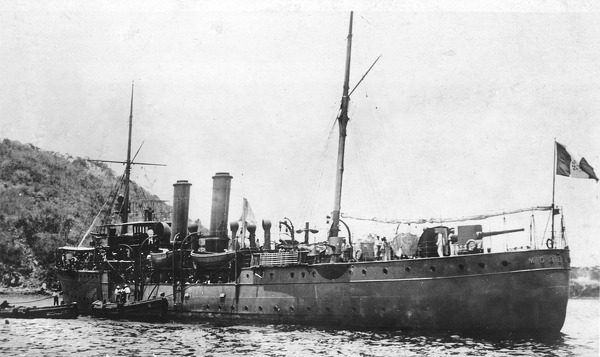
3. The Mexican gunboat Morelos at anchor in Mazatlán harbor, with the Islas de las Piedras at left. Photograph taken in 1913. Courtesy of the author.
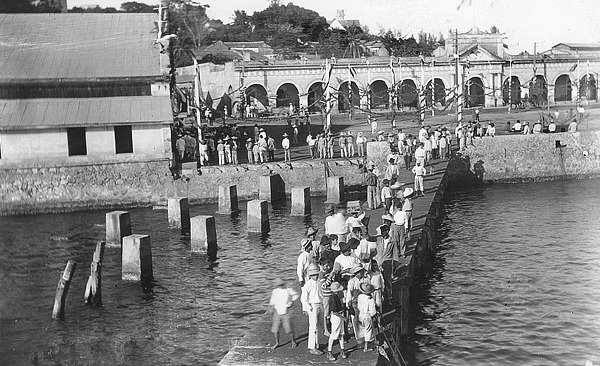
4. The wharf at Mazatlán harbor. In the foreground, boys with poles stand ready to pull lighters to the dock for unloading cargo. The Mazatlán customs house can be seen in the background; the customs warehouse is at left. Courtesy of the author.
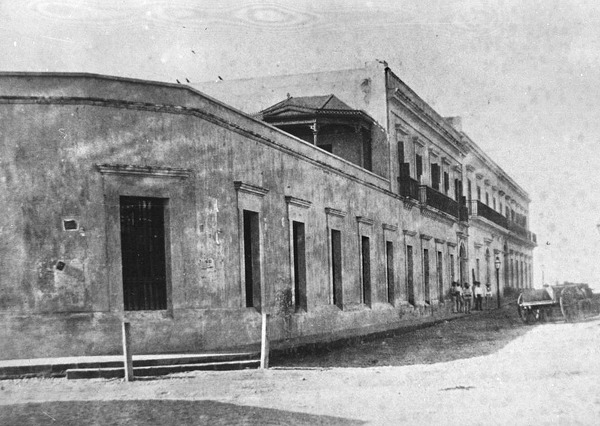
5. The headquarters of the powerful German trading house Melchers Sucesores. The single-story central warehouse stands in the foreground; administrative offices and living quarters are at the rear. From Guía General Descriptiva de la República Mexicana (Mexico: Estados y Territorios Federales, 1899).
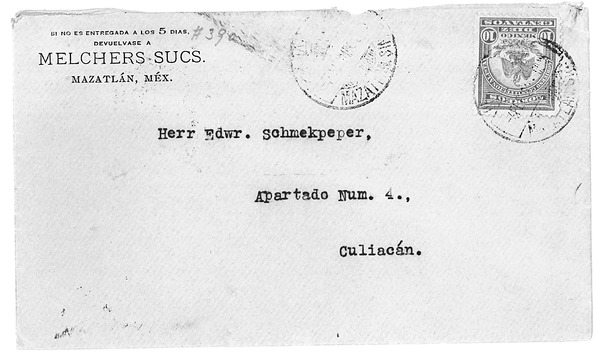
6. Melchers Sucesores business envelope addressed to a customer in Mexico. To circumvent U.S. blacklist restrictions, Melchers Sucs corresponded with American companies using “cloak” intermediaries. Courtesy of the author.

7. The gunboat Morelos after being set on fire by Constitutionalist rebel forces in 1914. The foremast has fallen onto the bridge. The discoloration behind the bow shows the point at which the fire ended. Courtesy of the author.

8. German naval attaché Karl Boy-Ed. Courtesy of the author.
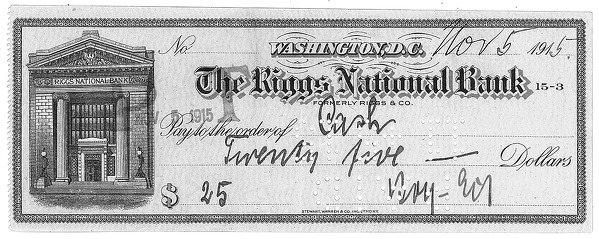
9. Shortly before being recalled to Germany for channeling funds to supply German warships from American ports, naval attaché Karl Boy-Ed wrote this check payable to “Cash.” Courtesy of the author.

10. A happier time: the Mexican gunboat Morelos sails in the Hudson-Fulton Celebration of 1909 in New York Harbor. Her captain is Lieutenant Commander Castellanos, the officer under whom Lieutenant Malpica would later mutiny. Courtesy of the author.
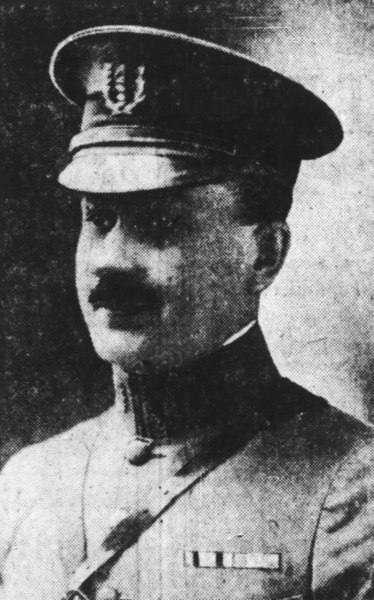
11. Dr. Paul Bernardo Altendorf wears the uniform of a colonel in the Mexican Army. From Chicago Daily Tribune, October 31, 1919, 12.
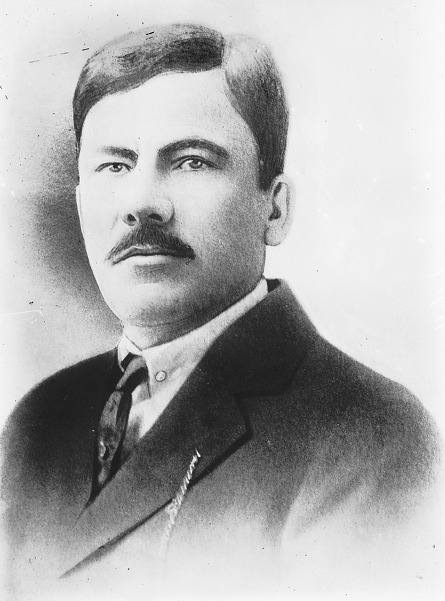
12. General Plutarco Elías Calles. Courtesy of the Library of Congress.
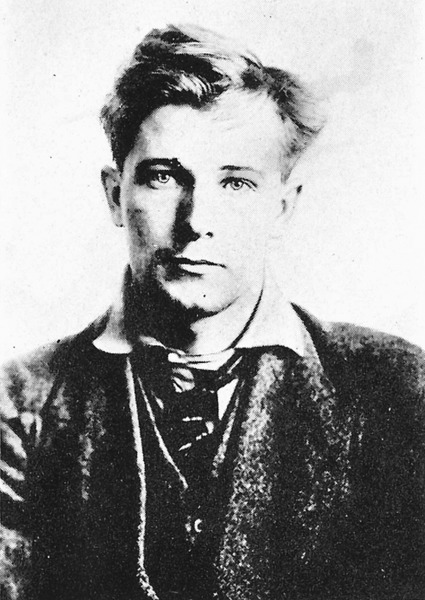
13. German saboteur Lothar Witzke. From Naugutuck Daily News, August 26, 1919, 4.
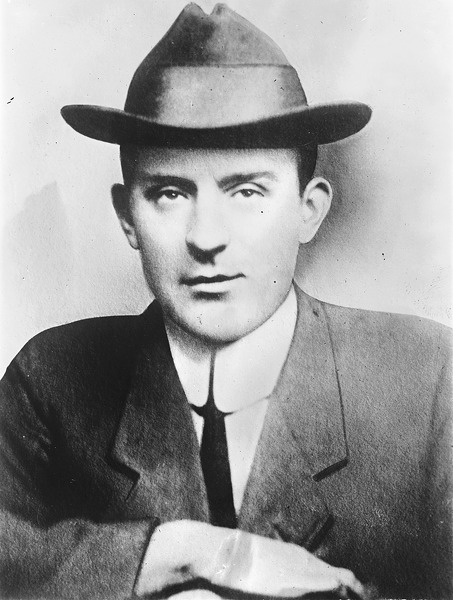
14. German spymaster Kurt Jahnke. Courtesy of the Library of Congress.
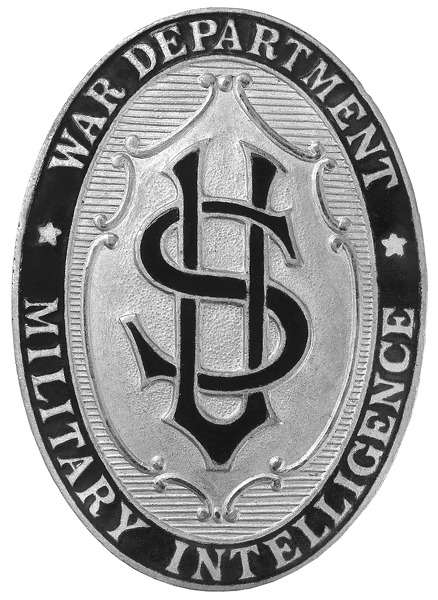
15. Badge issued to officers and agents of U.S. Army Military Intelligence during World War I. Courtesy of the author.
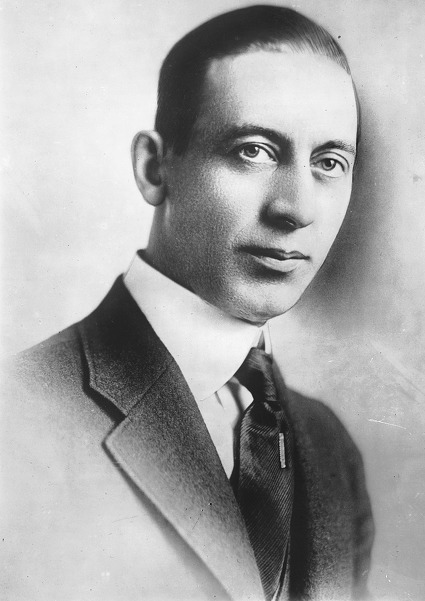
16. Altendorf’s superior, Byron S. Butcher of the U.S. Army Military Intelligence Division Corps of Intelligence Police. Courtesy of the Library of Congress.
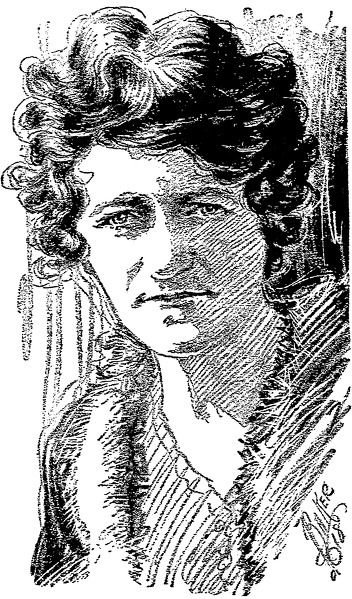
17. An artist’s rendering of Maude Lochrane drawn in 1918. From San Diego Union, April 3, 1918, 1.
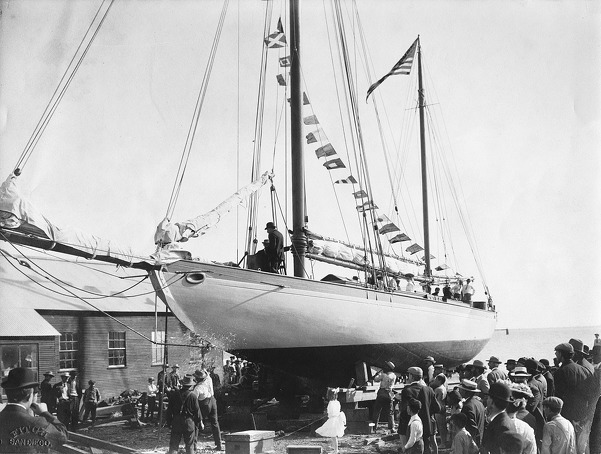
18. The schooner Alexander Agassiz is launched by the Marine Biological Association of San Diego, August 1907. Courtesy of Tillie Genter Papers, SMC 30, Special Collections & Archives, UC San Diego Library.
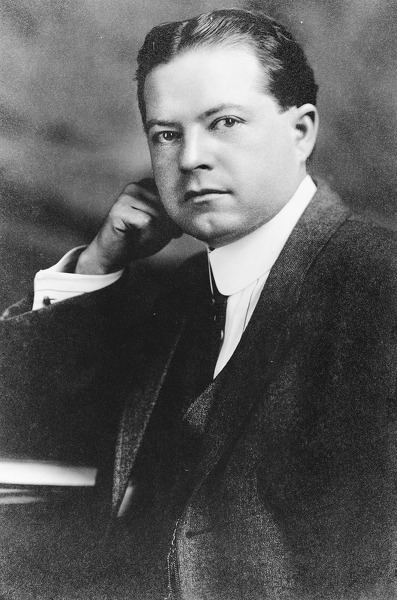
19. U.S. Consul William Edgar Chapman. Courtesy of the Library of Congress.
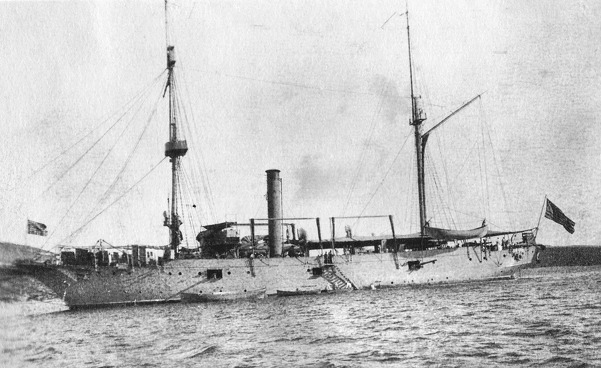
20. The American gunboat USS Vicksburg. Courtesy of the Department of the Navy, Naval Historical Center, Washington DC.
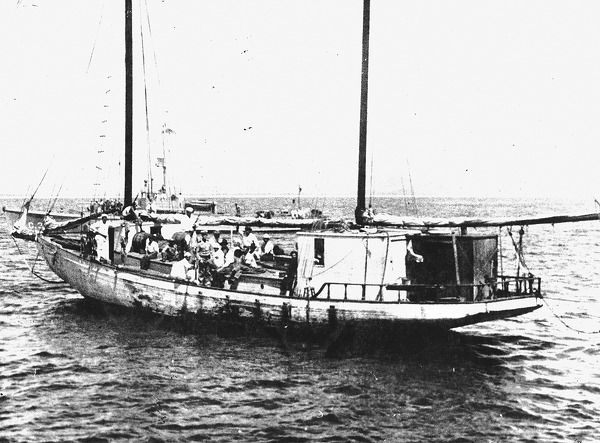
21. The schooner Alexander Agassiz after being captured by the USS Vicksburg on March 17, 1918. Lieutenant Dorr stands in the foreground. Maude Lochrane is sitting on the coaming at Dorr’s left. Submarine Chaser 302 is almost hidden behind the Agassiz. Courtesy of the Department of the Navy, Naval Historical Center, Washington DC.
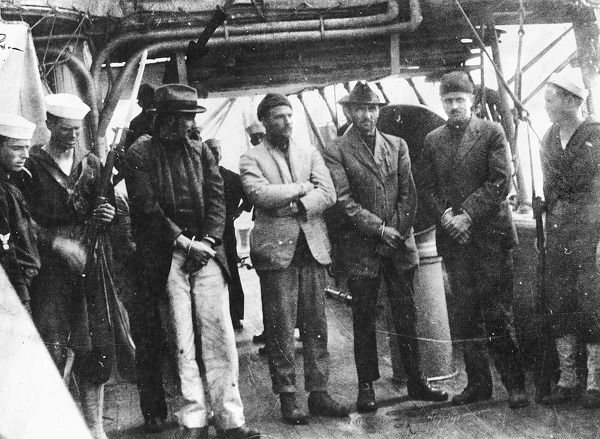
22. Agassiz crewmembers Boston, Madden, Volpert, and Brandt stand in irons aboard the Vicksburg, guarded by U.S. Navy blue jackets. Courtesy of the Department of the Navy, Naval Historical Center, Washington DC.

23. Officers and seamen of the U.S. Navy inspect the schooner Alexander Agassiz in San Diego harbor, March 1918. From Fort Wayne Journal Gazette, April 1, 1918. Courtesy of the author.
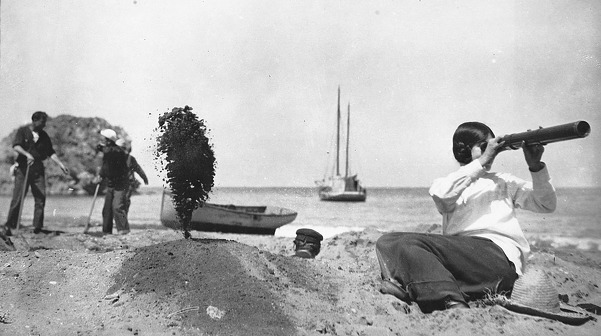
24. Sand flies through the air as actors in the 1918 Famous Players-Lasky film, Such a Little Pirate, dig for pirate treasure on Catalina Island. At right, actress Lila Lee scans the horizon with a spyglass. The schooner Alexander Agassiz is at anchor in the foreground. Publicity photo for the film from July 1918. Courtesy of the author.
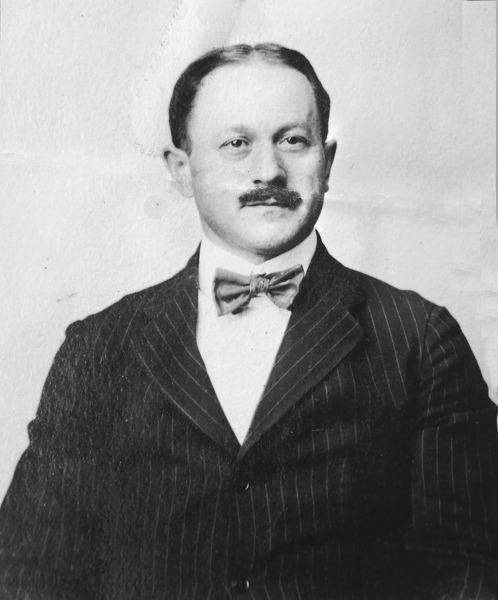
25. Dr. Paul Bernardo Altendorf in 1919. Photograph from Altendorf’s application for entry into the Military Intelligence Corps of Interpreters, dated May 1, 1919, NARA, RG165. Records of the War Department and Special Staffs, Military Intelligence Division, File 51–45.